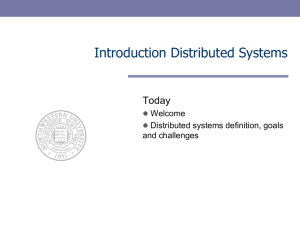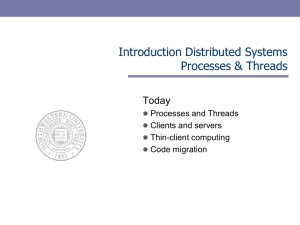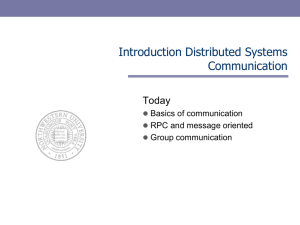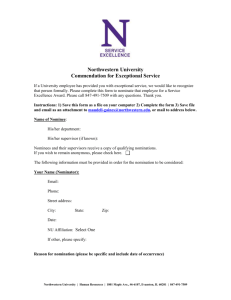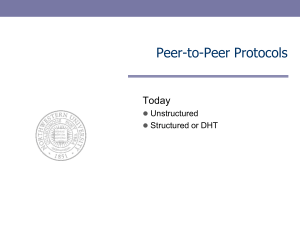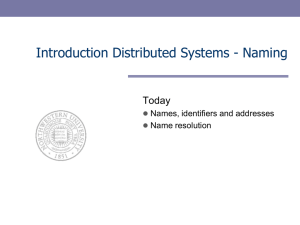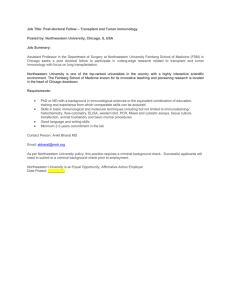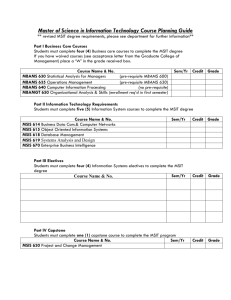Welcome to Distributed Systems
advertisement
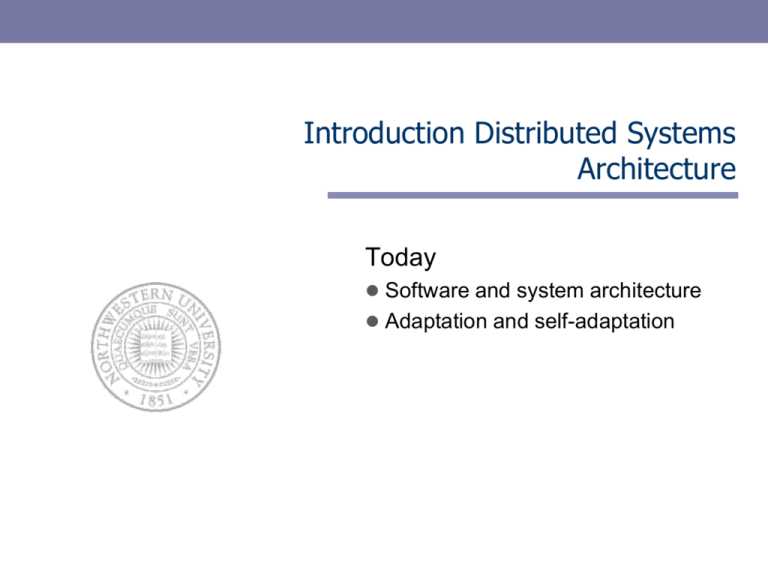
Introduction Distributed Systems Architecture Today Software and system architecture Adaptation and self-adaptation Dealing with complexity Distributed systems are complex pieces of software – to master complexity: good organization Different ways to look at organization of distributed systems – two obvious ones – Software architecture – logical organization of software components and interconnections – System architecture – their physical realization – the instantiation of software components on real machines MSIT Peer-to-Peer Computing Northwestern University 2 Architectural styles Organize into logically different components, and distribute those components over the various machines – Component: modular, replaceable unit with well defined I/F – Connector: a mechanism that mediates communication, coordination or cooperation among components Using components and connectors, different architectural styles Object-based Layered MSIT Peer-to-Peer Computing Northwestern University 3 Architecture styles Decoupling processes in – Space (“anonymous” or referential decoupling) and – Time (“asynchronous” or temporal decoupling) Alternative styles Event-based Shared data-space MSIT Peer-to-Peer Computing Northwestern University 4 System arch – vertical distribution Basic client/server model – Server processes offer services use by clients processes – Clients follow request/reply model in using services – Clients/servers can be distributed across different machines Traditional three-layered view – User-interface layer – an application’s user interface – Processing layer – application, i.e. without specific data – Data layer – data to manipulate through the application Internet search engine MSIT Peer-to-Peer Computing Northwestern University 5 System arch – horizontal distribution Multi-tiered client/server architecture – result from dividing the application into a user-interface, processing components and data level - vertical What’s horizontal distribution? – Clients and servers split into logically equivalent parts, each operating on its own share of the data set – Each process logically equal to each other, acting both as client and server – peer-to-peer In all cases, we are dealing with overlay networks: data is routed over connections setup between the processes MSIT Peer-to-Peer Computing Northwestern University 6 Peer-to-peer architectures Structured, DHT-based, P2P: nodes are organized following a specific distributed data structure – A structured network such as a logical ring, and make specific nodes responsible for services based only on their ID Unstructured P2P: nodes have randomly selected neighbors Hybrid P2P: – Potentially combining each model’s strengths – Some nodes are appointed special functions in a wellorganized fashion MSIT Peer-to-Peer Computing Northwestern University 7 Architecture and middleware A key goal for middleware is to provide distribution transparency Typically, however, middleware adopts particular architecture styles – Makes it simpler to develop applications for that style – Makes it hard/inefficient to do it with any other! To alternatives – build different versions or make them easy to adapt dynamically – Interceptors: Intercept the usual flow of control when invoking a remote object • Make replication transparent • Make handling MTU transparent • … MSIT Peer-to-Peer Computing Northwestern University 8 Adaptation and self-management To deal with changing environments/demands – adaptive middleware To facilitate software adaptation – Separation of concerns: Separate specific from general functionalities (e.g. reliability, security, …) and later weave them together into an implementation – Computational reflection: Let program inspect itself at runtime and adapt/change its settings dynamically if necessary – Component-based design: Organize a distributed application through components that can be dynamically replaced when needed MSIT Peer-to-Peer Computing Northwestern University 9 Self-management Too many features, too many knobs, no sufficient foresight, … Self-*/Autonomics systems – self-configurable, selfmanageable, self-healing, self-optimizing – Commonly, organized as a feedback control system Structure of an autonomic element – Managed element + – Autonomic manager • • • • Monitor – both the managed element and its environment Analyze – the monitoring information to Plan – construct plan and Execute – execute those plans One of today’s grand challenges MSIT Peer-to-Peer Computing Northwestern University 10 Question 2 How the architectural style adopted by a distributed application impact its adaptability? MSIT Peer-to-Peer Computing Northwestern University 11
